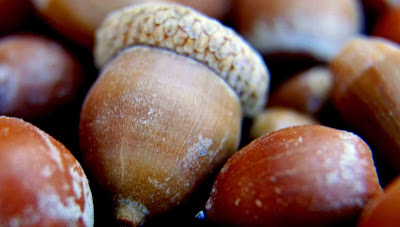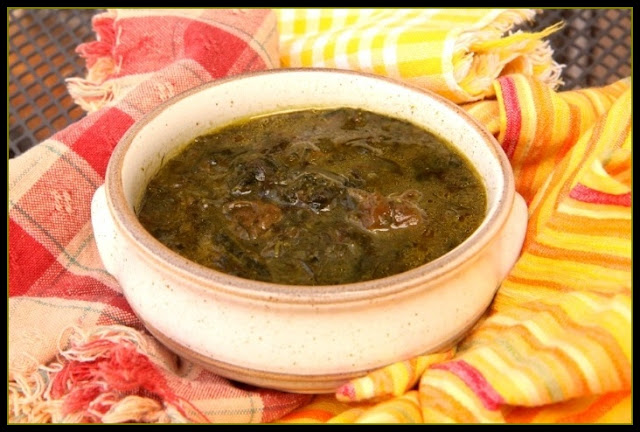Wild Things in November - Acorn
Welcome to Wild Things in November. If you are new to our foraging recipe challenge, check out the full explanation here. The long and short of it is that you, yes you!, are invited to make a recipe using acorns, send your link to wildthings.roundup@gmail.com , and at the end of the month, your dish will be featured along with lots of other yummy acorn recipes.
Hang on, you said, you didn't know you could eat acorns? Turns out that they aren't just for squirrels. Once they have been properly treated, acorn have a sweet nutty character, and make a nice addition to any number of recipe.
What to Look For
You can eat acorns from any number of different oaks, whether from red oaks, which have more pointed leaves, or white oaks, which have more rounded leaves. Around my parts, I see an occasional patch of scrub oak, known as Gambel's oak. But for the most part, I have to make use of acorns from oaks which are planted from ornamentals.
When collecting acorns, do not select those which have worm holes in the shell, or which are still wearing their "caps." These may be spoiled.
The character of acorns varied widely by species, some being more starchy, and some being fattier. And there is also a wide swing in the occurrence of tannins. The tannin content is probably your biggest concern with acorns. If you eat a bunch of super-tannic untreated acorns, they will give you a heck of a tummy ache, but the tannins make your mouth pucker so badly that I imagine that would be hard to do. Instead the tannins must be leached, in order to make acorns both safe and palatable.
Processing
I prefer to let my acorns dry until their shell becomes brittle. When they are freshly collected, the shell is pliable, which makes it very hard to get into. But if you let them cure for a month or two, the shell becomes hard and can be cracked like a regular nut.
If you are working with fresh acorns and their pliable shell, either use a small pair of sewing or fly tying scissors to break into the shell. Or, easier and messier and safer, smash them with a hammer, and collect the meat.
Leaching
Precious few varieties of acorn out there do not need to be leached. Do a small taste test. If they taste at all bitter, leach. There are two methods of leaching acorns, the quick method which uses heat, and the slow method which uses cold water. I really prefer the cold leaching method, as less flavor is lost, and the resulting flour is much more cohesive.
Before leaching, grind acorns into a meal using a food processor.
To hot leach acorns, place the acorn meal into a pot, covered by several inches of water. Bring to a boil, let boil 5 mintues, pour off water, and repeat until no bitter tannic taste remains. How many times the water must be changed depends entirely upon the acorn, and the process is quite variable.
To cold leach acorns, cover the meal with a few inches of cold water, and place in the fridge. Once per day, pour off the water, add fresh water, and repeat until the bitter taste is gone, up to two weeks. This process takes more patience, but will yield a sweet acorn flour that is more likely to adhere to itself, which makes it more versatile in cooking.
Once you are satisfied that the bitterness in your flour is gone, drain all water from it by straining it through a sieve overnight, pour it onto a baking sheet in a thin layer, pat any water away with paper towels, and let dry completely. Alternately, dry in a dehydrator overnight. The nut meat will have changed from cream to a deep tan color. Once it is completely dry, run the acorn meal through a food processor in small batches until it reaches a flour consistency. Refrigerate.
Cooking possibilities
Once you have leached and dried acorn flour, you are ready to roll with recipes. If you have hot leached it, you may need to combine it with other flours in baking recipes. Cold-leached acorn flour is more versatile, and may be used to make anything from pasta to pancakes to infused-butter.
For additional information about foraging acorns, visit my friend Wild Food Girl, and sign up for her October notebook, which is all about acorns. You can find another excellent primer on processing acorns at Frequently Found Growing on Disturbed Ground.
----------------------------------------------------------
So, ready to play? Please send your acorn recipes to wildthings.roundup@gmail.com




